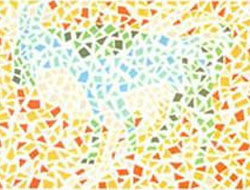
Color vision deficiencies are a group of conditions that affect the perception of color. They cause a range of changes in color vision, from mild difficulty with distinguishing shades to a total inability to detect color. These conditions are divided into three major categories: red-green color vision defects, blue-yellow color vision defects, and a complete absence of color vision.
Red-green color vision defects are the most common form of color vision deficiency. Affected individuals have trouble distinguishing between shades of red and green. They see these colors differently than most people and may have trouble naming different hues. Blue-yellow color vision defects, which are rarer, cause problems with differentiating shades of blue and green. These two forms of color vision deficiency disrupt color perception but do not affect the sharpness of vision (visual acuity).
An absence of color vision, called achromatopsia, is uncommon. People with complete achromatopsia cannot perceive any colors. They see only black, white, and shades of gray. A milder form of this condition, incomplete achromatopsia, may allow some color discrimination. People with achromatopsia almost always have additional problems with vision including reduced visual acuity, increased sensitivity to light (photophobia), and small involuntary eye movements called nystagmus.
 Color vision deficiencies are a group of conditions that affect the perception of color. They cause a range of changes in color vision, from mild difficulty with distinguishing shades to a total inability to detect color. These conditions are divided into three major categories: red-green color vision defects, blue-yellow color vision defects, and a complete absence of color vision.
Color vision deficiencies are a group of conditions that affect the perception of color. They cause a range of changes in color vision, from mild difficulty with distinguishing shades to a total inability to detect color. These conditions are divided into three major categories: red-green color vision defects, blue-yellow color vision defects, and a complete absence of color vision.